Relationship Spread #1
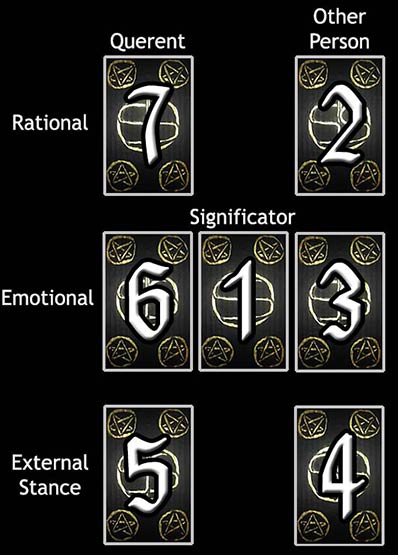
Difficulty: Easy
This tarot spread is easy to read, like a convenient chart. In this spread, court cards generally indicate actual people with the same characteristics. Knights (or corresponding princes, but not kings) and queens are meant to represent actual men and women in this tarot spread. Look for patterns in the cards as always.
Card #1 is the overall significator of the relationship. The two columns on either side of the significator characterise each individual's role in the relationship. The relationship does not have to be romantic. In fact, it could be a relationship between a person and a group, or even how two groups relate.
The top row, cards #7 & #2, is about the conscious thoughts of each person, or what they think about the relationship and likewise how they view their partner.
The middle row, cards #6 & #3, reveals the way each individual feels about the other. Emotional awareness corresponds to a person's unconscious thoughts that run deep, affecting a person in ways he or she is not fully aware of.
The bottom row, cards #5 & #4, represents the way each person behaves, in other words the stance taken regarding the relationship. The way a person acts may be genuine, but sometimes people are phony and manipulative, so it is best to weigh this card against the other person's cards to determine how they match up.
Your Relationship #1 Reading
| You | Other Person | ||
| Thought | 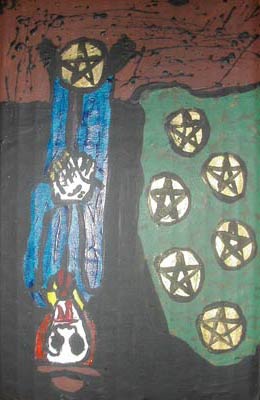 Seven of Pentagrams |
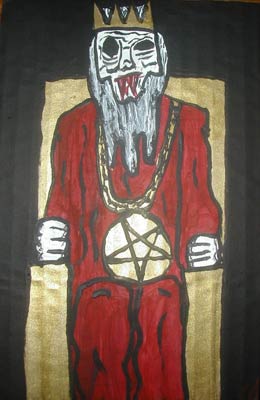 King of Pentagrams |
|
| Emotion | 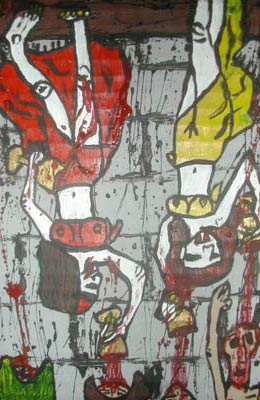 Four of Cups |
The Significator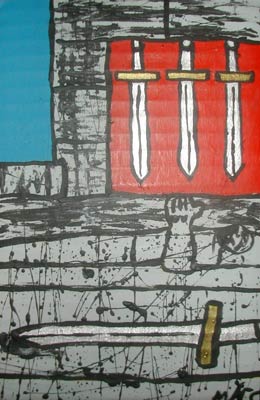 Four of Swords |
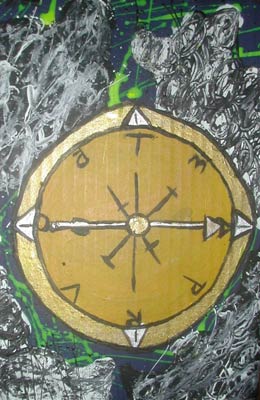 X. The Wheel of Fortune |
| External Stance | 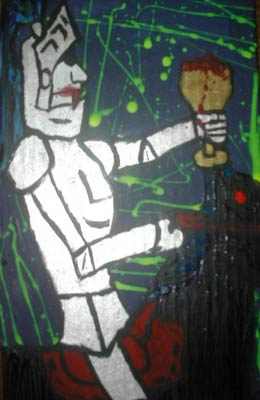 Knight of Cups |
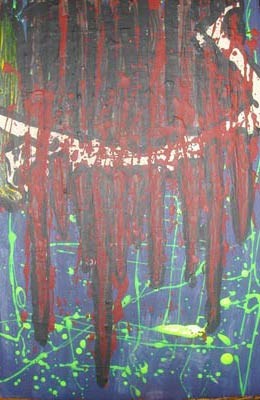 Ten of Stakes |

The Significator
Four of Swords
Symbolism:
A knight rests on a tomb, his body positioned in a meditative pose, surrounded by three swords. The fourth sword hovers above his head, suggesting reflection and inner contemplation. The imagery evokes a time of rest, recuperation, and mental renewal.
Meaning:
The Four of Swords calls for rest and recuperation. It indicates the need to step back from active challenges and recharge, both physically and mentally. This period of retreat will help restore your clarity and energy.
Keywords:
Upright: Rest, healing, contemplation, solitude, recovery.

The Querent's Thoughts
Seven of Pentagrams
Reversed
Symbolism:
A gravedigger stands proudly, posing for a photograph while covering his tracks. This card speaks to the satisfaction derived from one's labor, but also hints at the pride that can arise from success.
Meaning:
The Seven of Pentagrams represents work well done, success in business, and careful management of resources. It highlights the importance of planning, trade, and the use of one's skills in order to reap the benefits of hard work. It invites a reflection on the value of patience and long-term effort.
Reversed, it warns against bad deals, financial anxiety, or arguments over resources. It may suggest a failed business venture or dishonesty in financial exchanges.
Keywords:
Reversed: Bad deals, financial strain, dishonesty, anxiety.

The Other Person's Thoughts
King of Pentagrams
Symbolism:
A wise king adorned with a large pentagram holds his reign in a posture of strength and control. He represents mastery over material resources and the ability to wield power with integrity and wisdom.
Meaning:
The King of Pentagrams signifies success, mastery, and the completion of a journey towards wealth and stability. This card speaks to practical wisdom, resourcefulness, and the ability to create long-lasting success. It encourages you to embody leadership and strategic thinking in your endeavors.
Keywords:
Upright: Mastery, success, leadership, stability, resourcefulness.

The Querent's Emotions
Four of Cups
Reversed
Symbolism:
Two female vampires revel in the night, intoxicated by an excess of life force. Their satiation and indulgence highlight the dangers of overindulgence, while the cups represent both nourishment and excess.
Meaning:
The Four of Cups suggests the enjoyment of life, novelty, and pleasure. It indicates a time for exploration and a renewed sense of joy. This card can point to social events or gatherings where joy is found in connection and revelry. It also symbolizes the introduction of new opportunities, making it a time of emotional satisfaction and new connections.
Reversed, the card warns of weariness, aversion, or dissatisfaction despite indulgence. It may point to disillusionment with current pleasures or a sense of boredom in relationships.
Keywords:
Reversed: Weariness, dissatisfaction, aversion, boredom, disillusionment.

The Other Person's Emotions
X. The Wheel of Fortune
Symbolism:
The Wheel of Fortune appears as a rotating wheel carved from black obsidian, inscribed with arcane runes glowing faintly in red and gold. Around the wheel, shadowy figures—some triumphant, others despairing—are caught in its orbit, symbolizing the cyclical nature of fate. At its center, a single, unblinking eye peers outward, embodying the watchful presence of destiny and the unpredictable forces that govern life.
Meaning:
The Wheel of Fortune represents cycles, change, and the influence of fate. It reminds you that life is constantly shifting between highs and lows, and adaptability is key to navigating these changes. When this card appears, it often signals a turning point, a shift in fortune, or the hand of destiny at work. It encourages you to seize opportunities while being mindful of the bigger picture.
Keywords:
Upright: Change, destiny, cycles, luck, turning point, opportunities, adaptability.

The Querent's External Stance
Knight of Cups
Symbolism:
A white Knight rides a nightmare, holding a full cup and a full stomach. The imagery suggests a journey, perhaps one of passion or emotion, undertaken with both purpose and indulgence.
Meaning:
The Knight of Cups represents emotional pursuit, charm, and idealism. This card signifies someone who is romantic, passionate, and driven by emotions and desires. It often indicates an invitation, proposal, or movement towards a goal based on emotional fulfillment. The Knight is a messenger, bringing forth opportunities for love, creativity, or spiritual connection.
Keywords:
Upright: Romance, passion, idealism, emotional pursuit, invitations, messages, charm.

The Other Person's External Stance
Ten of Stakes
Reversed
Symbolism:
Amidst a sea of blood and carnage, a corpse is barely discernible, overshadowed by the horror of the scene. The sheer brutality suggests the weight of betrayal, excessive burdens, or a struggle too great to bear.
Meaning:
The Ten of Stakes signifies the culmination of challenges and the weight of responsibilities. It warns of being overburdened or taking on too much. This card serves as a reminder to reassess priorities and delegate tasks when necessary. While it reflects exhaustion, it also suggests that an end to the struggle is near.
Reversed, the card warns of oppression, excessive force, or bad luck. It may also indicate that you are holding on to burdens that could be released.
Keywords:
Reversed: Oppression, brutality, bad luck, overextension, relief.
